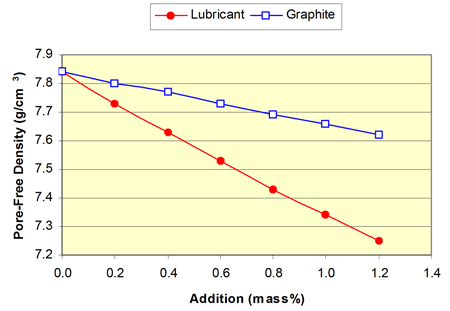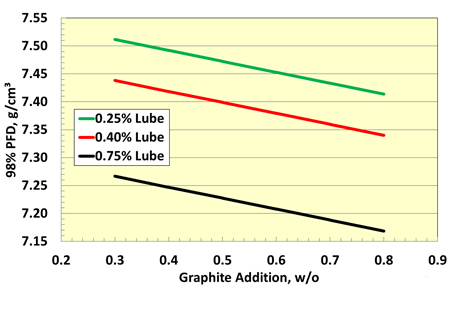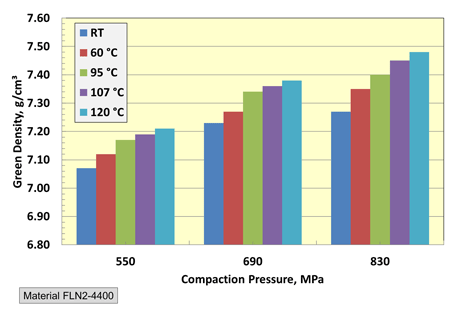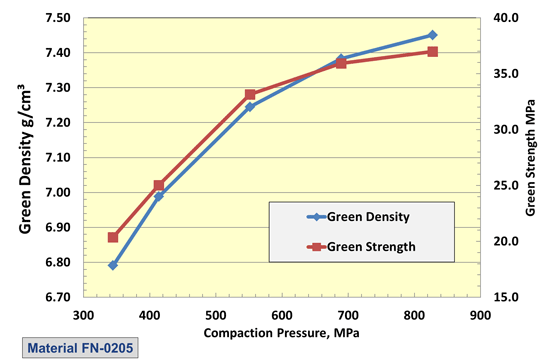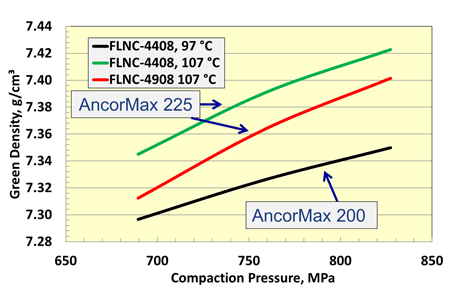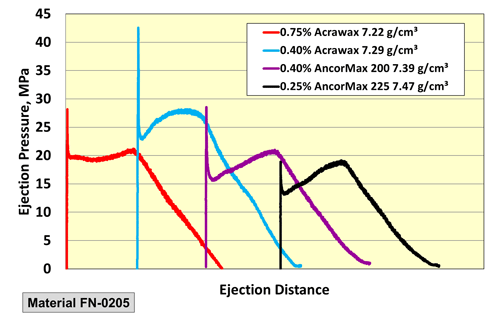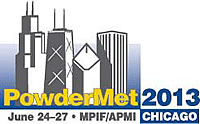PowderMet 2013: New lubricant system from Hoeganaes facilitates higher density PM parts
New lubricant system
In a presentation last year at PowderMet 2012 it was reported that this lubricant was still in the development phase and was referred to only as a “new lubricant system” (see our report here). The lubricant system has now been given the trade name AncorMax 225, will be launched commercially during the third quarter of 2013 and considerably more detail was given on its attributes in this presentation.
The basis for this lubricant system development was the recognition that maximum achievable green density is dependent on the parameter Pore Free Density (PFD), defined as the density of a green compact if all of the porosity could be removed, and that the low-density additions of lubricant and graphite have a particularly negative impact on PFD (Fig. 1).
It was noted that the practical limit of green density is around 98% of PFD as, beyond this limit, micro-laminations can be formed during compaction. The means of approaching this limit with AncorMax 225 were:
- To use the lubricant at as low an addition level as 0.25 wt%.
- To utilise warm die compaction and an increased compaction pressure to increase material compressibility.
AncorMax 225 is used in an ANCORBOND premix (i.e. the lubricant is also operating as a binder for alloying additions), containing 0.25 wt% total lubricant with an optimum part ejection temperature of ~107°C (225°F), hence the “225” designation.
It has been demonstrated that maximum green density can approach 7.5 g/cm3, depending on alloy and graphite content and compaction pressure (as demonstrated in Figs. 2 and 3).
Using a compaction pressure of 830 MPa, a room temperature green strength of around 35 MPa can be achieved (Fig. 4). Green strength at the warm compaction temperature was assessed as being around 20 MPa.
An ability was demonstrated to achieve a density of 7.4 g/cm³ with FLNC-4408 sinter-hardening material (Fig. 5).
It was also shown that ejection characteristics with AncorMax 225 at 0.25 wt% were equivalent to those with 0.75 wt% Acrawax (EBS), see Fig. 6.
Set against these advantages, a few part geometry limitations of this approach were referred to:
- Limitations in part height are anticipated. Parts over 25 mm in height may not practical. This limitation could be overcome by increasing lubricant level, but this would be at some sacrifice in green density.
- Larger parts may not be practical, because of short die contact time and inefficient thermal transfer.
- The relatively high compaction pressures, required for optimum compaction, of >550 MPa may not be practical for parts that need thin or fragile punches in the forming tooling.
However, for applications within these geometrical constraints, encouraging prototyping trials have been carried out.
The presentation was concluded with the revelation that, in such a prototyping trial on a batch of ~2,000 parts, a weight control of +/- 0.3% was achieved, with no degradation in surface finish of parts being observed.
In a separate presentation entitled “Advanced High-Performance Gear Processing via PM” later in the Special Interest Program, Francis Hanejko underlined the importance of achieving high “core” density in PM gear products that were to be subject to surface densification. Data was presented on the effect of core density of a PM gear on the achievable depth of densification (Fig. 7). It was concluded that a core density of >7.35 g/cm³ is desirable. The use of the AncorMax 225 lubricant system may therefore be a key contributor to achieving this condition.
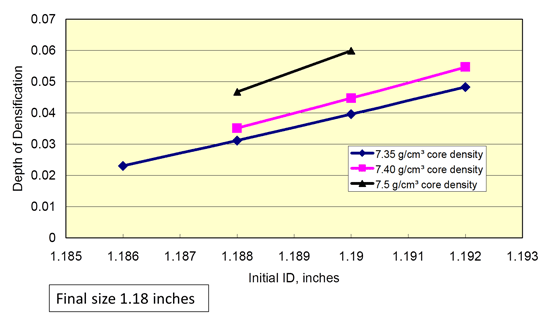
Fig. 7 Effect of core density on depth of densification in surface cold rolling of PM gears [2] (Courtesy MPIF)
References
[1] F J Hanejko, S Clisby (Hoeganaes Corporation, USA), High-Density Compaction Using Lubricant Levels of 0.25 w/o, as presented at PowderMet2013, MPIF, USA
[2] F J Hanejko (Hoeganaes Corporation, USA), Advanced High-Performance Gear Processing via PM, as presented at PowderMet2013, MPIF, USA
Author
Dr David Whittaker is a consultant to the Powder Metallurgy and associated industries. Contact +44 1902 338498 email: [email protected]
PowderMet2013 was organised by the Metal Powder Industries Federation. For more information please visit the MPIF website: www.mpif.org
News | Articles | Market reviews | Search directory | Subscribe to e-newsletter



